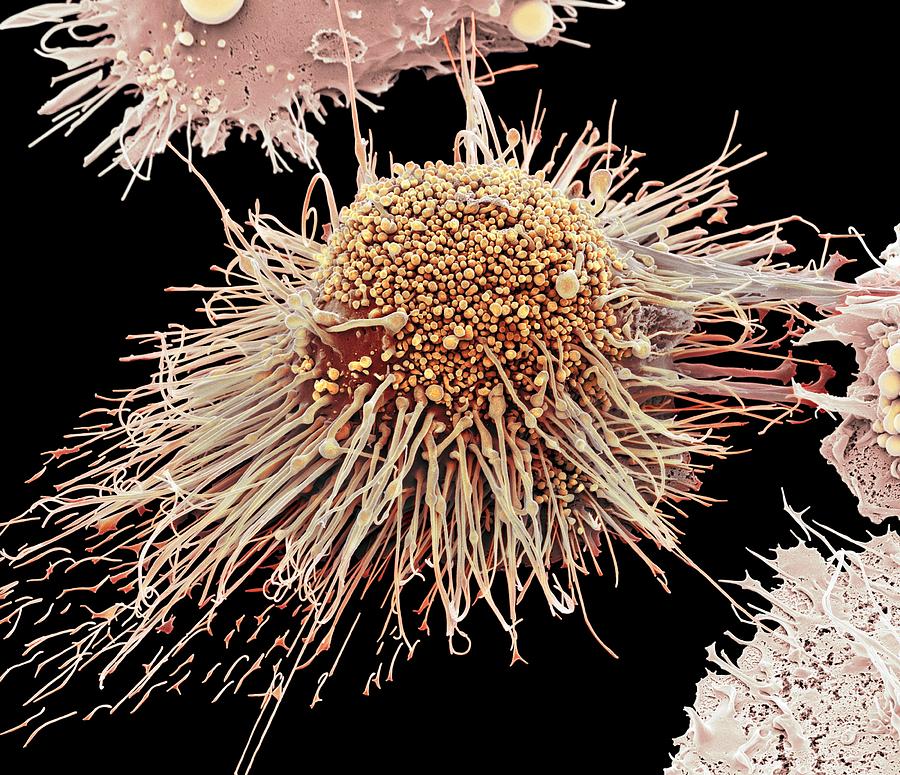The recent decision in Abbott v Sibio Technology (UPC_CoA_382/2024) offers valuable insights into the UPC’s approach to the interpretation of functional claim language and the ever-contentious topic of added matter. On both issues, the UPC broadly appears to have followed the EPO approach. However, the lack of any explicit indication from the Court of Appeal that it was following EPO case law, particularly on the issue of added matter, raises the question of whether there was nonetheless some important nuanced divergence from the EPO.
Case background
The case in Abbott v Sibio Technology related to Abbott’s European patent EP 3831283 for an on-body glucose monitoring device. Abbott alleged that Sibionics’ GS1 CGM product, offered for sale on the Sibionics’ online shop, infringed their patent. Abbott filed an application for a preliminary injunction with the UPC, The Hague Local Division, in March 2024. The Local Division denied this application finding that on the balance of probabilities, it was more likely than not that claims of the patent contained added matter relative to the original application as filed, due to the omission of an elastomeric sealing member in the wording of the claim (ORD_30431/2024). Abbott appealed this decision to the UPC Court of Appeal.
The UPC approach to claim construction
The UPC Court of Appeal applied Article 69 EPC in conjunction with the Protocol on Interpretation of Article 69 EPC when considering claim construction, referencing its own previous decision in UPC_CoA_335/2023 (NanoString v 10x Genomics). In Nanostring, the Court of Appeal set out some principles of claim construction, stating that “[t]he patent claim is not only the starting point but the decisive basis for determining the protective scope of a European patent under Art. 69 EPC in conjunction with the Protocol on the Interpretation of Art. 69 EPC” . The Court also found that “[t]he interpretation of a patent claim does not depend solely on the strict, literal meaning of the wording used. Rather the description and the drawings must always be used as explanatory aids for the interpretation of the patent claim and not only to resolve any ambiguities in the patent claim”. The question of how much the description should be used to interpret the claim is, of course, currently the subject of a referral to the EPO’s Enlarged Board of Appeal (G 1/24).
The UPC approach to means-plus-function claim language
Applying the general principles of claim construction established in Nanostring, the Court of Appeal addressed several disputed claim construction issues in this case. Of most interest is its consideration of the correct approach to the interpretation of means-plus-function language. Means-plus-function language refers to patent claim language whereby a feature is defined by its function rather than its specific structure. Unlike in the US, the EPO does not have a specific statutory provision governing means-plus-function language (compare 35 U.S.C. § 112(f)) Indeed, in Europe, there is no presumption that using the word “means” automatically invokes means-plus-function interpretation. The EPO generally permits functional definitions provided that a skilled person would have no difficulty in providing some means of performing this function without exercising inventive skill (EPO Guidelines for Examination, F.IV-2.1).
The Court of Appeal noted that many features of the claimed device were described in a functional way. Claim 1, for example, specified a glucose sensor assembly comprising and a base portion “configured to” be adhered to the skin surface of the subject by an adhesive patch. Sibionics argued that the words “configured to” corresponded to means-plus-function language that should be understood to mean “suitable for” rather than requiring a specific adaptation or structure designed exclusively for the stated purpose. Abbott, by contrast, referred to a section of the EPO Guidelines for Examination relating to computer-implemented inventions, according to which means-plus-function are to be interpreted as means “adapted to” carry out the respective functions (F-IV-3.9.1(ii)).
The UPC Court of Appeal rejected Abbott’s position, finding that the cited section of the Guidelines was only applicable to claims directed to computer-implemented invention and was an exception to the general principle of interpretation for mean-plus-function language in Europe (para. 47). The Court of Appeal agreed with Sibionics that, as a general principle of interpretation, means-plus-function features must be understood as any feature suitable for carrying out the function. As such “configured to” should be understood to mean “suitable for” (para. 47).
The interpretation of “configured to” was relevant to the novelty analysis. By arguing for the broader interpretation, Sibionics’ aimed to establish that the prior art device was “suitable for” being adhered to the skin, even if not specifically designed for that purpose. However, despite agreeing with Sibionics’ approach to the interpretation of the functional claim language, the Court nonetheless rejected the argument that the functional feature was present in the prior art device (para. 96). When assessing prior art, the Court of Appeal noted that while the control unit in the device had certain structures, it was not “configured to be adhered to the skin surface” as required by the claim, “especially considering that the invention is to solve the technical problem underlying [the prior art device], that the on-body device is subject to mechanical stress due to physical activity when the patient is wearing the sensor” (para. 98).
Added matter, essential features and intermediate generalisations
The EPO has a (in)famously strict approach to the question of whether claims have basis in the application as filed (Article 123 EPC) . There is consequently considerable interest in whether the UPC will follow the EPO to added matter, or whether the UPC will take a more forgiving approach. The EPO’s test for determining whether an amendment has basis in the application as filed or original disclosure is to ask “what a skilled person would derive directly and unambiguously, using common general knowledge, and seen objectively and relative to the date of filing, from the whole of these documents as filed” (Case Law of the Boards of Appeal, II-E-1.31).
On the question of added matter, the UPC did not mention the EPO gold-standard. The UPC Court of Appeal nonetheless applied a very similar test. For the Court of Appeal the question was “what the skilled person would derive directly and unambiguously using his common general knowledge and seen objectively and relative to the date of filing, from the whole of the application as filed.” (para. 52)
A key issue for added matter was whether claim 1 lacked basis due to the omission of the elastomeric sealing member from the claim. In the first instance decision, the Local Division found that the patent likely contained added matter on the grounds that the lack of this feature amounted to an intermediate generalisation that extended beyond the content of the original disclosure.
Whilst not cited by the UPC Court of Appeal, it is also worth noting here the EPO case law on added matter and the removal of features from a claim. The EPO case law permits amendments that remove features, provided that a) the features are not described as essential and b) that “the skilled person would directly and unambiguously recognise that the feature is not, as such, indispensable for the function of the invention in the light of the technical problem the invention serves to solve” (EPO Guidelines for Examination, H-V-3.1).
In its decision, the Court of Appeal disagreed with the Local Division’s finding. The Court of Appeal noted several embodiments described in the application all made use of elastomeric or elastic materials for sealing. However, the Court of Appeal found that the original application also generally disclosed other ways to achieve sealing. For the Court of Appeal, “[f]rom all of this, it is clear to the skilled person that there is a need for sealing of the contacts for the reasons set out in the original application. As to the specific method of sealing, the original application does not provide any particular guidance in terms of specific advantages or disadvantages of the various methods of sealing, neither in general, nor in relation to specific configurations of the sensor assembly […]” (para. 75).
Importantly, for the Court of Appeal, from the specification the skilled person would understand that “the exact method of sealing does not contribute to, and is thus not relevant for, the technical teaching of the invention as disclosed in the original application” (para. 75). For the Court of Appeal there was also not an “inextricable link” between the sealing method and other features (para. 78). The Court of Appeal concluded that “it is not more likely than not that claim 1 of the patent at issue contains added matter” (para. 88).
In the rest of its decision, the UPC Court of Appeal also rejected Sibionics’ novelty and inventive step attacks. Having also found the likelihood of infringement, the Court of Appeal thus granted a preliminary injunction against Sibionics in all UPC Contracting Member States where the patent was in force.
Final thoughts
Article 24 of the UPC Agreement specifically states that the UPC shall apply the EPC. However, there is no explicit binding effect of EPO case law on the UPC mentioned in the UPC Agreement. Despite not explicitly indicating as such, the UPC’s decision in this case to follow the EPO’s approach to both functional claim language and added matter is welcome evidence that the UPC is generally willing to broadly follow EPO case law. On added matter, however, the UPC Court of Appeal’s approach arguably placed more focus on how a skilled person would understand the functional and purpose of the original disclosure than might be expected from the EPO, see for example the EPO “catastrophic comma loss” cases for comparison (T 1473/19 and T 1127/16). The UPC decision nonetheless seems aligned with the EPO Guidelines on added matter and essential features, which also mention the technical contribution of the claims. So what does this tell us about the UPC’s overall approach to added matter? In this case, there is no opposition division or board of appeal decision with which to compare the outcome. The jury is therefore still out on whether the UPC might take a more lenient approach to added matter in the long-run.









